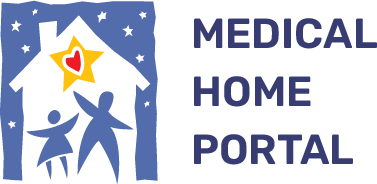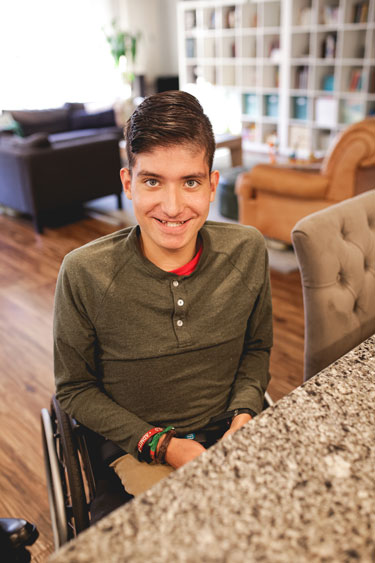Transition to Adulthood
Each state has programs and support to help youth with special needs transition to adulthood. In addition to the information in this Medical Home Portal sub-topic, you can find out what your state offers by talking with your Center for Parent Information and Resources (DOE) (AKA Parent Training and Information Center (PTI) or National Center for Family - Professional Partnerships (F2F HICs). Often, state Title V Maternal Child Health groups are also working on initiatives and programs to help young adults and their families with transitioning to adulthood; you can find yours at State Title V Profiles and Contacts. Subtopics included are:
Preparing For Transition
Transition planning can include:
- Shifting from pediatric to adult healthcare with health insurance;
- Leaving school for work, college, or other choices;
- Moving from home to a supportive place to live; and
- Becoming less dependent on family as one builds skills and gains more abilities.
One key to becoming an independent adult is for your child to gain self-knowledge. By learning more about her diagnosis and handling medications, and learning about what she would like to do for school or work, your child will be better able to make choices for herself about the future, and advocate for herself to achieve her goals. Some young adults will still need support from their parents or legal guardian to work with agencies and fill out the paperwork needed to qualify for adult services. Whether a young adult is making his own choices or relying on the help of a team of trusted friends and family members, or a guardian, he’ll find it helpful to set up a portable and up-to-date health care summary.
From Entitlement to Eligibility
At 18, your child is legally an adult—a title that comes with new freedom, responsibilities, and a new system of care and support for education, health care, and other services.
-
Education: As a student, your child was entitled to an
education and may have received services from special education and/or a 504
plan. However, students who plan to stay in school beyond the 12th grade
need to be determined eligible for services. Students who meet eligibility
requirements may receive student services until the age of 22.
- Whether your young adult plans to leave high school after the 12th grade or at the age of 22, at age 18 she will need to be determined eligible for services. Because this involves many programs with different funding sources and eligibility rules, it can be unclear and time consuming. It often involves filling out many forms, but if you and your child start this ahead of time, you’ll learn what you need to know to make this change as easy as possible.
-
Health care: One type of change your child may face once
he is an adult (age 18) is that he will now need to apply for Medicaid and
SSI based on his own income and assets, instead of based on yours.
- As soon as a young adult has his 18th birthday, he should apply for adult Medicaid to make sure he has continuing care.
- Adult Medicaid may not have all the same services that your child received when younger.
- The federal Early and Periodic Screening, Diagnostic and Treatment (EPSDT) benefit provides medically necessary services to eligible children on Medicaid through the age of 21; after that, young adults are no longer protected by EPSDT federal law.
-
Other services: Because each state has its own rules on
eligibility for state and federal aid, it is key that as a parent you get
guidance from your state Family to Family Health Information Center (F2F
HIC), Parent Training and Information Centers (PTI), State Human
Service Agencies, and Social Security Administration.
- While Social Security is available to adults with disabilities, it is a safety net, Social Security income is moderate and fixed.
It is recommended to look at your choices as part of your transition planning starting as early as age 14.
Help with Transition Planning
Youth and young adults with special needs, when possible, should be the leading voices when planning for their transitions, applying for programs that meet their needs, and finding ways to include their strengths, hopes, and dreams in their future lives.
- All possible efforts should be made to include people with disabilities in the same age endeavors as their peers without disabilities, such as college, vocational training, recreation, and work.
- Parents, with their expertise and knowledge of their children, are vital partners in the planning of transition programs. Teachers, aides, counselors, and others who know your child may also be helpful in transition planning.
Local Family Voices (FVAO) or Health Information(F2F) Center and/or Parent Training and Information Centers (PTI)can help families with useful insights and resources to understand what is needed for a strong transition from pediatric to adult health care.
Resources
Information & Support
For Parents and Patients
Choices - A comprehensive transition guide for families (UPC) ( )
)
A guide from the Utah Parent Center Transition University - Learn to navigate Supported Decision-Making, alternatives to guardianship,
SSI / SSDI, Medicaid, ABLE Accounts, financial & estate planning, Person-Centered Planning, and health care
Successful Transitions for Youth with Disabilities (UPC) ( )
)
A Guide from the Utah Parent Center Transition University-Designed for youth 14 & up to help
you find your path and live your best life!
Health Care Transition Resources for Youth & Young Adults (Got Transition)
A 6-step approach to help individuals gain independent health care skills, prepare for an adult model of care, and transfer
to new providers; provided by the Maternal and Child Health Bureau and The National Alliance to Advance Adolescent Health.
Parent Training and Information Centers (PTI)
Provide training and information to parents of infants, toddlers, children, and youth with disabilities and to people who
work with parents to enable them to participate more fully and effectively with professionals in meeting the educational needs
of their children with disabilities. See the link for Download a List of Parent Centers across the USA to find the parent
center in your state; U.S. Department of Education.
Family Voices (FVAO) or Health Information(F2F) Center
Family-to-Family Health Information Centers are nonprofit, family-staffed organizations that assist families of children and
youth with special health care needs (CYSHCN). Locate state-based F2F HICs, providing support, information, resources, and
training.
Supplemental Security Income (SSI)
The Supplemental Security Income (SSI) program pays benefits to disabled adults and children who have limited income and resources;
this link provides information on applying for SSI.
Authors & Reviewers
| Author: | Medical Home Team |
| 2013: revision: Alfred N. Romeo, RN, PhDR |
| 2005: first version: Robin PrattCA; Barbara Ward, RN BSCA; Gina Pola-MoneyCA; Joyce DolcourtCA; Kristine FergusonCA; Teresa Such-Neibar, DOCA; Lynn Foxx PeaseCA; Helen PostCA; Roz WelchCA |


